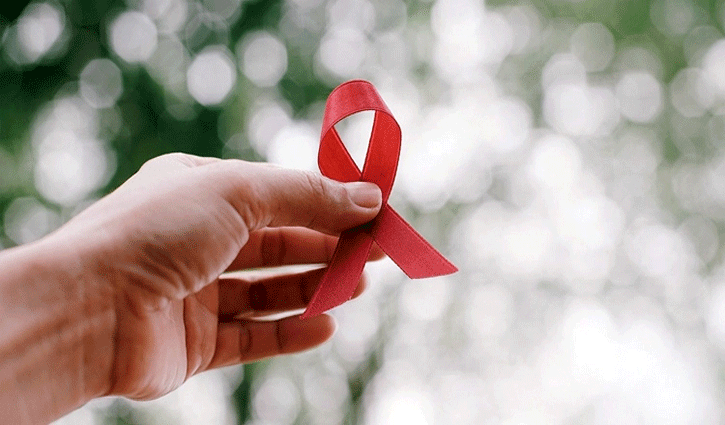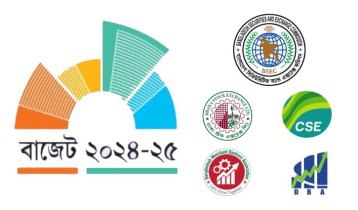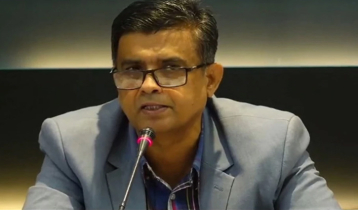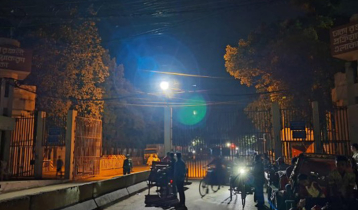Awareness is growing, yet AIDS is becoming a threat
Hasan Mahmud || risingbd.com

Bangladesh has reached a new ‘record’ regarding the spread of the human immunodeficiency virus (HIV) and the resulting acquired immunodeficiency syndrome (AIDS) cases recorded in the country: 1,250 new infections were found in 2022, the highest ever. A significant increase compared to the 658 cases diagnosed in 2020 and 729 in 2021. The data, coming from the Department of Health, reveals an increase of 303 more patients compared to the previous year.
Infection with HIV, a retrovirus, can be managed with treatment but without treatment can lead to a spectrum of conditions including AIDS. Effective treatment for HIV-positive people (people living with HIV) involves a life-long regimen of medicine to suppress the virus, making the viral load undetectable. There is not yet a vaccine nor a cure. An HIV-positive person on treatment can expect to live a normal life, and die with the virus, not of it. An HIV-positive person who has an undetectable viral load as a result of long-term treatment has effectively no risk of transmitting HIV sexually.
Concerned said, awareness is increasing in the country as a result of various programs of the government, but AIDS is gradually becoming a threat. Health experts express concern that the risk of AIDS infection among the population is increasing due to the fact that identified patients avoid treatment. In fact, many people affected by AIDS prefer not to reveal their condition publicly, fearing social stigma.
Bangladesh National AIDS/STD Control Programme claimed that the rate of bringing AIDS patients under the treatment coverage is increasing every year. The awareness rate in 2019 was 52 percent which raised to 63 percent in 2021. Some 65 percent of AIDS infected people was under the treatment two year ago which currently increased to 77 percent. However, the opinion of doctors is, awareness should be increased.
HIV Epidemic in Bangladesh
Bangladesh has maintained a low national HIV prevalence in the general population (<0.01%) over the years since identification of first case in 1989. However, a concentrated epidemic has been on rise among populations identified as key populations in the country. Bangladesh has been collecting data on risk behavior and HIV prevalence among key populations through national surveillance system since 1989.
There are around 10 thousand people suffering from AIDS in Bangladesh, but on 1 December 2017 there were half of them: 5,586. The cases are concentrated mainly in the divisions of Dhaka (54%), Chittagong (20%), but also in Khulna (10%) and Sylhet (6%).
Among the people who have undergone testing and tested positive this year, the majority are ordinary citizens, followed by male ‘sex workers’. The increase in cases found and in people who are aware of being infected is due to the cultural work that the institutions have started. An example is the Programme established last year to detect HIV infection in nine prisons in Bangladesh. This has led to seven diagnoses among prisoners in 2022, infected with the virus due to drug use and the condition of syringes.
If the Dhaka division remains the one with the highest number of infections in an absolute sense and new cases, there is also an escalation in the peripheral areas of the country. This is demonstrated by the thousands of deaths every year due to AIDS because those infected do not want or are unable to be treated, as in the case of Ukhia, a subdistrict of Bangladesh located in the Cox's Bazar region, Chittagong division, where an inhabited camp is located by displaced Rohingya.
Patients can lead normal lives on medication
Health experts express, AIDS patients can stay healthy for a long time by taking medicine regularly. Many AIDS patients are doing well and have given birth to healthy children. Therefore, if AIDS is diagnosed, there is no reason to conceal it or worry. You can stay healthy under treatment and the risk of common people contracting it will also be reduced.
Besides increasing the scope of treatment, doctors feel that it is necessary to emphasize on increasing awareness at the grass root level. Since, still many people do not want to disclose if they are affected by this disease. Moreover, they do not express interest in taking AIDS treatment.
Since 2013, Bangladesh had been providing free treatment to HIV-positive mothers under its Preventing Mother-to-Child Transmission programme. According to Directorate General of Health Services (DGHS), Bangladesh has achieved more than 95% success in giving birth to safe babies by HIV-positive mothers.
Rohingya’s are increasing the anxiety
The DGHS is providing comprehensive treatment in 23 districts, identified to be at high risk with most detection in recent years. Rohingyas are a risk factor among us. They have been mixing with the common people from the camps at various times. However, alongside the Rohingya, the challenge is that the infection is now spreading beyond vulnerable populations to the general population.
HIV-positive babies are particularly vulnerable to various diseases like pneumonia and measles and other childhood infectious diseases as their immune system remains weaker than that of a healthy baby.
Children are often overlooked
Amid various plans and programs, children often remain out of focus. Bangladesh is no exception. Statistics shows, globally only half of children with HIV are on treatment, against 76% of HIV-positive adults.
Some related programs are ongoing in Bangladesh for the wellbeing of mothers and children. However, experts say, work with children separately very much needed.
Bangladesh is trying to head that problem off at the first opportunity. Since 2013, Bangladesh's national AIDS/STD Programme has been providing life-saving treatment totally free to HIV-positive pregnant women under a Prevention of Mother-to-Child Transmission (PMTCT) programme.
The programme's traction has grown over the years, with World Bank data showing that 36% of pregnant, HIV-positive women were reached with ART in 2021.
The effects are plain. In 2022, a total of 74,491 pregnant women came under HIV testing under the PMTCT programme across the country. Twenty-two new HIV-positive pregnant women were detected at ART centres. 25 babies were born to HIV-positive women that year, and of those 25 babies, 24 were born HIV-negative. Only one was detected as HIV-positive.
Data from the Directorate General of Health Services (DGHS) further revealed that so far 238 HIV-positive mothers who took treatment at the ART centres from 2013 to 2022 gave birth to 224 HIV-negative babies. Only 14 newborns tested HIV-positive during this time.
Mortality is disappointing
Bangladesh has so far detected 8,761 AIDS cases and 1,588 of those patients have died. At least 729 new AIDS cases have been detected and 188 patients have died of AIDS in the country in 2021. About 26% of them were general population, 20% were migrants, 8% were intravenous drug users, 26% were Rohingya people, 9% were members of the homosexual population, 7% male sex workers, 2% members of the transgender community, and 2% were among female sex workers. No statistics on deaths in 2022 and 2023 have been published in Bangladesh yet.
Expert Opinion
Md Akhtaruzzaman, senior manager AIDS/STD Programme, DGHS told that: “We are working to achieve the UNAIDS 95-95-95 target by 2025. This year we have appointed one HIV positive person as a field worker in 12 HIV-AIDS treatment centers to motivate AIDS patients to seek treatment.”
He also said, “When an AIDS patient tells others, I am an HIV positive patient, I am fine with treatment, you also take treatment, then people are interested in taking treatment.”
Dhaka/AI




































